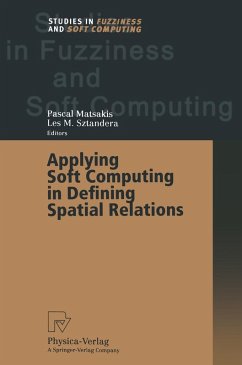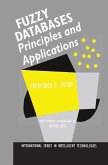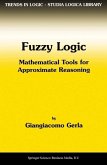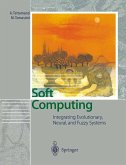Applying Soft Computing in Defining Spatial Relations (eBook, PDF)
Redaktion: Matsakis, Pascal; Sztandera, Les M.
40,95 €
40,95 €
inkl. MwSt.
Sofort per Download lieferbar

20 °P sammeln
40,95 €
Als Download kaufen

40,95 €
inkl. MwSt.
Sofort per Download lieferbar

20 °P sammeln
Jetzt verschenken
Alle Infos zum eBook verschenken
40,95 €
inkl. MwSt.
Sofort per Download lieferbar
Alle Infos zum eBook verschenken

20 °P sammeln
Applying Soft Computing in Defining Spatial Relations (eBook, PDF)
Redaktion: Matsakis, Pascal; Sztandera, Les M.
- Format: PDF
- Merkliste
- Auf die Merkliste
- Bewerten Bewerten
- Teilen
- Produkt teilen
- Produkterinnerung
- Produkterinnerung

Bitte loggen Sie sich zunächst in Ihr Kundenkonto ein oder registrieren Sie sich bei
bücher.de, um das eBook-Abo tolino select nutzen zu können.
Hier können Sie sich einloggen
Hier können Sie sich einloggen
Sie sind bereits eingeloggt. Klicken Sie auf 2. tolino select Abo, um fortzufahren.

Bitte loggen Sie sich zunächst in Ihr Kundenkonto ein oder registrieren Sie sich bei bücher.de, um das eBook-Abo tolino select nutzen zu können.
Geometric properties and relations play central roles in the description and processing of spatial data. The properties and relations studied by mathematicians usually have precise definitions, but verbal descriptions often involve imprecisely defined concepts such as elongatedness or proximity. The methods used in soft computing provide a framework for formulating and manipulating such concepts. This volume contains eight papers on the soft definition and manipulation of spatial relations and gives a comprehensive summary on the subject.
- Geräte: PC
- ohne Kopierschutz
- eBook Hilfe
- Größe: 11.57MB
Andere Kunden interessierten sich auch für
![Mathematical Linguistics (eBook, PDF) Mathematical Linguistics (eBook, PDF)]() Andras KornaiMathematical Linguistics (eBook, PDF)46,95 €
Andras KornaiMathematical Linguistics (eBook, PDF)46,95 €![Fuzzy Databases (eBook, PDF) Fuzzy Databases (eBook, PDF)]() Frederick E. PetryFuzzy Databases (eBook, PDF)72,95 €
Frederick E. PetryFuzzy Databases (eBook, PDF)72,95 €![Fuzzy Set Theory-and Its Applications (eBook, PDF) Fuzzy Set Theory-and Its Applications (eBook, PDF)]() Hans-Jürgen ZimmermannFuzzy Set Theory-and Its Applications (eBook, PDF)232,95 €
Hans-Jürgen ZimmermannFuzzy Set Theory-and Its Applications (eBook, PDF)232,95 €![Fuzzy Set Theory-and Its Applications (eBook, PDF) Fuzzy Set Theory-and Its Applications (eBook, PDF)]() Hans-Jürgen ZimmermannFuzzy Set Theory-and Its Applications (eBook, PDF)160,95 €
Hans-Jürgen ZimmermannFuzzy Set Theory-and Its Applications (eBook, PDF)160,95 €![Fuzzy Logic (eBook, PDF) Fuzzy Logic (eBook, PDF)]() G. GerlaFuzzy Logic (eBook, PDF)72,95 €
G. GerlaFuzzy Logic (eBook, PDF)72,95 €![Soft Computing (eBook, PDF) Soft Computing (eBook, PDF)]() Andrea TettamanziSoft Computing (eBook, PDF)40,95 €
Andrea TettamanziSoft Computing (eBook, PDF)40,95 €![Information, Uncertainty and Fusion (eBook, PDF) Information, Uncertainty and Fusion (eBook, PDF)]() Information, Uncertainty and Fusion (eBook, PDF)72,95 €
Information, Uncertainty and Fusion (eBook, PDF)72,95 €-
-
-
Geometric properties and relations play central roles in the description and processing of spatial data. The properties and relations studied by mathematicians usually have precise definitions, but verbal descriptions often involve imprecisely defined concepts such as elongatedness or proximity. The methods used in soft computing provide a framework for formulating and manipulating such concepts. This volume contains eight papers on the soft definition and manipulation of spatial relations and gives a comprehensive summary on the subject.
Dieser Download kann aus rechtlichen Gründen nur mit Rechnungsadresse in A, B, BG, CY, CZ, D, DK, EW, E, FIN, F, GR, HR, H, IRL, I, LT, L, LR, M, NL, PL, P, R, S, SLO, SK ausgeliefert werden.
Produktdetails
- Produktdetails
- Verlag: Physica-Verlag HD
- Seitenzahl: 205
- Erscheinungstermin: 13. August 2012
- Englisch
- ISBN-13: 9783790817522
- Artikelnr.: 53397076
- Verlag: Physica-Verlag HD
- Seitenzahl: 205
- Erscheinungstermin: 13. August 2012
- Englisch
- ISBN-13: 9783790817522
- Artikelnr.: 53397076
- Herstellerkennzeichnung Die Herstellerinformationen sind derzeit nicht verfügbar.
Fuzzifying Spatial Relations.- 1 Motivation.- 2 Imprecision in Spatial Relations.- 3 Applying Allen's Algorithm to Fuzzy Relations.- 4 Other Fuzzy Relations.- 5 Fuzzy Constraint Satisfaction.- 6 Conclusion.- Acknowledgement.- References.- Path Composition of Positional Relations Integrating Qualitative and Fuzzy Knowledge.- 1 Introduction.- 2 Composition of Positional Relations.- 3 Path Composition.- 4 Integrating Qualitative and Fuzzy Knowledge.- 5 Fuzzy Knowledge Coming from Particular Distance Systems.- 6 Conclusions.- Acknowledgments.- References.- Spatial Relations Based on Dominance of Fuzzy Sets.- 1 Spatial Relations.- 2 Spatial Relations Among Fuzzy Subsets.- References.- Mathematical Morphology and Spatial Relationships: Quantitative, Semi-Quantitative and Symbolic Settings.- 1 Introduction.- 2 Basic Morphological Operations, Fuzzy and Logical Extensions.- 3 Computing Spatial Relationships from Mathematical Morphology: Quantitative and Semi-Quantitative Setting.- 4 Spatial Representations of Spatial Relationships.- 5 Symbolic Representations of Spatial Relationships.- 6 Conclusion.- References.- Understanding the Spatial Organization of Image Regions by Means of Force Histograms: A Guided Tour.- 1 Introduction.- 2 The Notion of the Histogram of Forces.- 3 Comparing Force Histograms.- 4 Defining Fuzzy Spatial Relations.- 5 Generating Linguistic Spatial Descriptions.- 6 Conclusion.- Acknowledgments.- References.- Fuzzy Spatial Relationships and Mobile Agent Technology in Geospatial Information Systems.- 1 Introduction.- 2 Background.- 3 Fuzzy Directional Relationships and Querying.- 4 Extensions to the Model.- 5 Intelligent Agent Technology.- 6 Summary and Future Work.- Acknowledgments.- References.- Using Fuzzy Spatial Relations to Control Movement Behavior ofMobile Objects in Spatially Explicit Ecological Models.- 1 Introduction.- 2 Modeling Habitat Landscape.- 3 Fuzzy Control of Spatial Movement.- 4 Discussion.- References.- A Fuzzy Set Model of Approximate Linguistic Terms in Descriptions of Binary Topological Relations Between Simple Regions.- 1 Introduction.- 2 Related Literature.- 3 Fuzziness of Approximate Linguistic Terms - Preliminary Cognitive Evidences.- 4 A Fuzzy Set Model of Approximate Linguistic Terms.- 5 Discussion.- 6 Concluding Remarks.- Acknowledgements.- References.- About the Editors.
Fuzzifying Spatial Relations.- 1 Motivation.- 2 Imprecision in Spatial Relations.- 3 Applying Allen's Algorithm to Fuzzy Relations.- 4 Other Fuzzy Relations.- 5 Fuzzy Constraint Satisfaction.- 6 Conclusion.- Acknowledgement.- References.- Path Composition of Positional Relations Integrating Qualitative and Fuzzy Knowledge.- 1 Introduction.- 2 Composition of Positional Relations.- 3 Path Composition.- 4 Integrating Qualitative and Fuzzy Knowledge.- 5 Fuzzy Knowledge Coming from Particular Distance Systems.- 6 Conclusions.- Acknowledgments.- References.- Spatial Relations Based on Dominance of Fuzzy Sets.- 1 Spatial Relations.- 2 Spatial Relations Among Fuzzy Subsets.- References.- Mathematical Morphology and Spatial Relationships: Quantitative, Semi-Quantitative and Symbolic Settings.- 1 Introduction.- 2 Basic Morphological Operations, Fuzzy and Logical Extensions.- 3 Computing Spatial Relationships from Mathematical Morphology: Quantitative and Semi-Quantitative Setting.- 4 Spatial Representations of Spatial Relationships.- 5 Symbolic Representations of Spatial Relationships.- 6 Conclusion.- References.- Understanding the Spatial Organization of Image Regions by Means of Force Histograms: A Guided Tour.- 1 Introduction.- 2 The Notion of the Histogram of Forces.- 3 Comparing Force Histograms.- 4 Defining Fuzzy Spatial Relations.- 5 Generating Linguistic Spatial Descriptions.- 6 Conclusion.- Acknowledgments.- References.- Fuzzy Spatial Relationships and Mobile Agent Technology in Geospatial Information Systems.- 1 Introduction.- 2 Background.- 3 Fuzzy Directional Relationships and Querying.- 4 Extensions to the Model.- 5 Intelligent Agent Technology.- 6 Summary and Future Work.- Acknowledgments.- References.- Using Fuzzy Spatial Relations to Control Movement Behavior ofMobile Objects in Spatially Explicit Ecological Models.- 1 Introduction.- 2 Modeling Habitat Landscape.- 3 Fuzzy Control of Spatial Movement.- 4 Discussion.- References.- A Fuzzy Set Model of Approximate Linguistic Terms in Descriptions of Binary Topological Relations Between Simple Regions.- 1 Introduction.- 2 Related Literature.- 3 Fuzziness of Approximate Linguistic Terms - Preliminary Cognitive Evidences.- 4 A Fuzzy Set Model of Approximate Linguistic Terms.- 5 Discussion.- 6 Concluding Remarks.- Acknowledgements.- References.- About the Editors.







